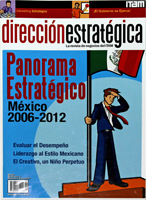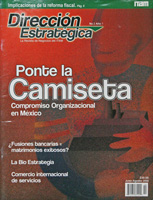
By: José Frank González
There are no desperate situations, only despairing people in certain situations.
Tibetan proverb
Negotiation can be defined as the interaction between two or more parties designed to bring their different positions closer together and to reach an agreement that is beneficial to all.
Negotiation starts when differences exist in the positions that the parties have maintained. If their positions coincided, there would be no need to negotiate.
Negotiation seeks to eliminate these differences, usually by gradually bringing positions together until they reach a point that is acceptable to all. To initiate a negotiation, all affected parties must show an interest in reaching an agreement. If one party is unwilling to come to an understanding, then there cannot be a negotiation.
A rule that should govern any negotiation – and which makes it much easier to reach an agreement – is respect for the other party. The opponent should not be seen as an enemy that must be beaten. On the contrary, he should be seen as a collaborator with whom you are going to work closely together to overcome existing differences and reach an acceptable agreement.
It is important to understand that when you negotiate you confront problems, not people. You need to seek an agreement that meets the needs of everyone involved. However, this fundamental rule is often not respected and the negotiation becomes a fierce struggle in which each party tries to impose their point of view, looking to get the maximum benefit at the expense of the opponent. In this case, the chances of reaching an agreement are significantly reduced, and even if reached, there are certain risks:
- That the losing party does not comply with what is agreed.
- That the losing party complies with the agreement but is unwilling to ever negotiate again with the winning party, which makes it impossible to establish lasting economic relations.
In short, you need to find an equitable solution that takes into account the views and interests of all parties involved. In this way, everyone considers the agreement as his or her own, not as an imposed solution. In addition, all will be satisfied with the negotiation, with the intent to comply with what is agreed upon and with interest in maintaining this professional relationship that has proved to be so beneficial.
This way of understanding negotiation based on cooperation may not be shared by the other party, which seeks to impose their particular confrontational style. You must not fall into this trap. On the contrary, you need to continue seeking collaboration, trying to convince the other party of its advantages.
In his book Getting Past No (1991), William L. Ury presents a five-step strategy for conquering the obstacles that prevent cooperation, that is, to reach a joint solution to the problems in each negotiation. To achieve this cooperation and satisfy your interests as well as those of the your counterpart in a negotiation, the author points out that you must overcome five obstacles to achieve an agreement that satisfies all:
- One’s own reaction. The problem that one confronts in negotiations is not only the uncooperative behavior of the opponent, but also one’s own reaction to this behavior.
- The opponent’s emotions. Negative emotions that the other party may have in the negotiations, such as fear and lack of confidence.
- The opponent’s position. People’s tendency to stick with one position and try to make the other person give in.
- The skepticism of others. This occurs when others cannot see the benefits of an agreement. Although the interests of the other person are met, he fears losing face for having given in.
- The power of others. If the other party sees the negotiation as a matter of winning or losing, this becomes a very difficult situation because he will seek any means to defeat the others.
According to Ury’s book, the best way to overcome these five obstacles is to implement the strategy of penetration. The negotiation of penetration is the opposite of imposing a position on the other party. Instead of harping on a new idea in the exterior, stimulate the other party so that he envisions it within. The essence of this strategy is indirect action. It is not directly opposed to the opponent’s strength, because the negotiators of penetration treat their adversaries as partners.
Although this strategy delivers excellent results, the success of any negotiation depends on preparation. Even if the negotiator knows the strategy perfectly well and has mastered each of the steps, if he is not prepared for the negotiation the chances of success are significantly reduced.
Preparation time depends on the importance of each negotiation. How much time you spend on preparation is related to how much you value the interests that are at stake in a negotiation.
Preparation for negotiations begins with planning to reach an agreement that is satisfactory to both parties, taking into account the following points:
Interests
Interests are the intangible motivations that lead a negotiator to support a position. They are his needs, desires, concerns, fears and aspirations. You first must decipher your own interests and give them priority. You can achieve this with simple questions like: Why? Why would I want this? What is the problem I want to solve? Subsequently, you must decipher the interests of your counterparts because the most important skill of a negotiator is to put themselves in the shoes of another. Someone who does not understand the way other people perceive situations will never succeed in the negotiations.
Options
Options are necessary; insisting on a single solution or a single position is a common error in the field of negotiations. When there is an opening to consider several options, new possibilities open up and increase the possibility of satisfying both parties.
Rules
The use of fair rules that are independent of the interests of both parties prevents a power struggle that could erupt into a conflict, and transforms the selection process into a joint search for a just and satisfactory solution.
Alternatives
All good negotiators must know their BATRA: Best Alternative To a Negotiated Agreement. This BATRA is one alternative that the negotiator must use as a last resort. There are three steps to obtain the best BATRA:
- Identify the BATRA
- Promote the BATRA
- Decide if it is necessary to negotiate or if the BATRA is preferable before any agreement can be reached in the negotiation
- Identify the BATRA of the other party
Proposals
The difference between a proposal and an option is the commitment. A proposal is an agreement that the negotiator is willing to accept in its entirety. Here are guidelines for formulating a proposal:
- Aspire to something big, always realistic but big; in other words, aspire for something that is within the framework of the law and within the possibilities of the negotiation itself.
- Prepare a retreat, which is the minimum agreement that you are willing to accept.
- Devise a stop sign; an agreement that barely covers the minimum interests and that will serve as a warning of a possible bad agreement.
The objective of a strategy of penetration is to remove the obstacles that exist between the no and the yes to make an agreement satisfactory to both parties. The goal of any negotiator is not to beat their counterparts, but to win them over.
Strategy of Penetration
First step. Do not react: Go to the balcony
Suppressing your instincts and not reacting to the counterpart’s behavior is the first step that any negotiator should put into practice to reach a satisfactory agreement that meets the interests of both parties. The most common responses are to react, give in, or break off relations.
You should analyze things objectively. To achieve this, the negotiator should be able to observe the negotiation from the outside, separate himself from his impulses and emotions, and devote himself to obtaining his interests in a fair manner, that is, to consider negotiating from another point of view, from the outside, by “going to the balcony.”
The negotiator must identify if the other party is immersed in some of the following techniques in order to neutralize their effect: stonewalling, (take it or leave it!), threats, dirty tricks or lies.
You should never allow anyone to pressure you into making quick decisions. Some ways of gaining time are: pause and silence, repeat the tape, take notes, procrastinate, and request a recess.
Second step. Do not argue: Put yourself in your opponent’s place
Negotiators must create an atmosphere that is conducive to the joint solution of problems. They should disarm the opponent by doing the opposite of what the counterpart expects. The other person expects that the negotiator will act as an adversary, so he must stand by his opponent’s side, recognizing his interests, points of view and emotions. The foregoing involves three things:
- Listen carefully to what the other party says. When your opponent feels as though he is understood, you have created an atmosphere that will change the course of action. Use patience and control, and do not interrupt.
- Recognize the opponent’s point of view, his feelings and prestige, and the need for recognition, and create a favorable climate for the agreement. It is not necessary to agree with him, only to understand his point of view.
- Give in as often as possible. Direct the conversation toward the points where both parties agree, turning an antagonistic discussion into a sensible dialogue.
Third step. Do not reject: Rethink
Rethinking means diverting the other person’s attention away from his fixed position and directing it to identify interests, devising creative options and discussing fair rules to make choices.
Once the negotiator has managed to put himself in the shoes of his counterpart, they will attack the problem together, acting as partners rather than rivals. This will allow the negotiator to better understand the options of his counterpart, and instead of rejecting them and strengthening one position, he will rethink them seeking the satisfaction of all interested parties.
Fourth step. Do not pressure: Build a golden bridge
Resistance can manifest itself in several ways: lack of interest in your proposals, ambiguous approaches, delays, lack of follow through or direct rejection. To overcome it, try to draw the other person from his position, without pressuring him, in the direction that the negotiator wants to go, starting from where he is at.
This step involves presenting an easy path for the other person to follow, taking him from his original position toward an agreement that is beneficial to both parties. You must be aware that by taking this path, the counterpart may lose sight of the benefits that he will receive from the agreement if he feels defeated. The negotiator can help the other party save face and make it appear as though he came out ahead.
Fifth step. Do not attack: Use power to educate
Instead of using power to force the other to his knees, use it to help him come to reason.
When the counterpart does not want to reach a joint solution to the problem, it is likely he will try to utilize his power to try and make the negotiator yield. You should use the necessary restraints to avoid falling into the trap of the other party. It is very easy to rely on threats and coercion, but they only lead to blind alleys. The negotiator must show the other party that he cannot win on his own – he needs to work together.
Conclusions
Two people are needed to negotiate, but only one is needed to unravel a complicated situation. That is the role of a negotiator as he searches for a joint solution to a problem, with a spirit of cooperation and with a willingness to meet his interests and those of the counterpart in a fair manner, as partners rather than rivals.
You should make an effort to resolve difficult issues through interests. The important thing is not to impose conditions on the other party, but to guide him so that he makes a fair decision that meets the interests of both sides.
Preparation is essential in a negotiation. You cannot reach a negotiation without being prepared. Do not fight over all the details because it is important to maintain good relations.
Corollary
Key Points
- Keep an open mind. Understand the other party.
- Ask if he subscribes or signs.
- In Mexico, one does not ask for recesses.
- Negotiating is the beginning of new relations.
- To negotiate, you must have an objective.
- Do not think of “winning at all costs,” but “in all fairness.”
- Negotiating is to give and receive, give and give (the majority remain here) and receive and receive.
- It is not a question of intelligence, but of boldness.
- Expert negotiators first speak about the environment and then about what they are going to negotiate.
- You should develop a negotiating agenda.
- BATRA: Best Alternative To a Negotiated Agreement.
Myths about Negotiation
- Good negotiators are born with the skill.
- Experience is the best teacher.
- Good negotiators take risks.
- Good negotiators rely on intuition.
Successful Negotiation
- Satisfies interests: ours (good), theirs (acceptable), others (tolerable).
- Commitments are well planned, realistic and operational.
- It is fair for all; no one is surprised.
- It is one of the best options and not a compromise solution. The solution to a commitment is to renegotiate; in this case, you must ask in exchange for what.
- The process is efficient when there is good communication.
- The process helps to establish a permanent relationship.?
































One Trackback
[...] con vistas a acercar posiciones y poder llegar a un acuerdo que sea beneficioso para todas. leer más… //// « Reflexiones sobre la Infraestructura como Estrategia Promotora de [...]